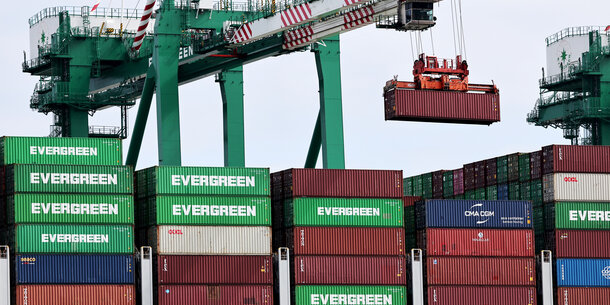Afghanistan, Iraq, maybe Libya. If you asked the average American where the United States has been at war in the past two decades, you would likely get this short list. But this list is wrong — off by at least 17 countries in which the United States has engaged in armed conflict through ground forces, proxy forces, or air strikes.1
For members of the public, the full extent of U.S. war-making is unknown. Investigative journalists and human rights advocates have cobbled together a rough picture of where the military has used force, but they rely on sources whose information is often incomplete, belated, or speculative. There is only so much one can learn about the United States’ military footprint from trawling Purple Heart ceremonies, speaking with retired military personnel, and monitoring social media for reports of civilian harm.2
Congress’s understanding of U.S. war-making is often no better than the public record. The Department of Defense provides congressionally mandated disclosures and updates to only a small number of legislative offices. Sometimes, it altogether fails to comply with reporting requirements, leaving members of Congress uninformed about when, where, and against whom the military uses force. After U.S. forces took casualties in Niger in 2017, for example, lawmakers were taken aback by the very presence of U.S. forces in the country.3 Without access to such basic information, Congress is unable to perform necessary oversight.
It is not just the public and Congress who are out of the loop. The Department of Defense’s diplomatic counterparts in the Department of State also struggle to understand and gain insight into the reach of U.S. hostilities. Where congressional oversight falters, so too does oversight within the executive branch.
This proliferation of secret war is a relatively recent phenomenon, and it is undemocratic and dangerous. The conduct of undisclosed hostilities in unreported countries contravenes our constitutional design. It invites military escalation that is unforeseeable to the public, to Congress, and even to the diplomats charged with managing U.S. foreign relations. And it risks poorly conceived, counterproductive operations with runaway costs, in terms of both dollars and civilian lives. So how did we get here?
Two sources of the government’s ability to wage war in secret are already the subject of much discussion. The first is the 2001 Authorization for Use of Military Force (AUMF), which was enacted in the wake of the September 11 attacks. Notwithstanding the limitations in its text, the 2001 AUMF has been stretched by four successive administrations to cover a broad assortment of terrorist groups, the full list of which the executive branch long withheld from Congress and still withholds from the public. The second is the covert action statute, an authority for secret, unattributed, and primarily CIA-led operations that can involve the use of force.4Despite a series of Cold War–era executive orders that prohibit assassinations, the covert action statute has been used throughout the war on terror to conduct drone strikes outside areas of active hostilities.
But there is a third class of statutory authorities that enable undisclosed hostilities yet have received little public attention: security cooperation authorities. Congress enacted these provisions in the years following September 11 to allow U.S. forces to work through and with foreign partners. One of them, now codified at 10 U.S.C. § 333, permits the Department of Defense to train and equip foreign forces anywhere in the world. Another, now codified at 10 U.S.C. § 127e, authorizes the Department of Defense to provide “support” to foreign forces, paramilitaries, and private individuals who are in turn “supporting” U.S. counterterrorism operations.
While training and support may sound benign, these authorities have been used beyond their intended purpose. Section 333 programs have resulted in U.S. forces pursuing their partners’ adversaries under a strained interpretation of constitutional self-defense. Section 127e programs have allowed the United States to develop and control proxy forces that fight on behalf of and sometimes alongside U.S. forces. In short, these programs have enabled or been used as a springboard for hostilities.
The public and even most of Congress is unaware of the nature and scope of these programs. The Department of Defense has given little indication of how it interprets §§ 333 and 127e, how it decides which § 333 partner forces to defend, and where it conducts § 127e programs. When U.S. forces operating under these authorities direct or engage in combat, the Department of Defense often declines to inform Congress and the public, reasoning that the incident was too minor to trigger statutory reporting requirements.
Notwithstanding the challenges Congress has faced in overseeing activities under §§ 333 and 127e, Congress recently expanded the Department of Defense’s security cooperation authorities. Section 1202 of the National Defense Authorization Act (NDAA) for 2018 largely mirrors § 127e, but instead of supporting U.S. counterterrorism efforts, the partner forces it covers are intended to support U.S. “irregular warfare operations” against “rogue states,” such as Iran or North Korea, or “near-peers,” such as Russia and China. Far beyond the bounds of the war on terror, § 1202 may be used to engage in low-level conflict with powerful, even nuclear, states.
Through these security cooperation provisions, the Department of Defense, not Congress, decides when and where the United States counters terrorist groups and even state adversaries. Moreover, by determining that “episodic” confrontations and “irregular” warfare do not amount to “hostilities,” the Department of Defense has avoided notification and reporting requirements, leaving Congress and the public in the dark.5
This report delves into the legal frameworks for conducting and overseeing security cooperation and identifies how those frameworks have inaugurated the modern era of secret war. It draws on public reporting and materials prepared by the Departments of Defense and State, as well as interviews with administration officials, congressional staffers, and journalists. Part I provides a brief history and overview of constitutional war powers and congressional oversight of the military; part II analyzes the suite of authorities under which security cooperation takes place; and part III identifies the constitutional defects of this secret war-making and proposes reforms to increase transparency and prevent abuse.
Endnotes
-
1
Nick Turse, Amanda Sperber, and Sam Mednick, “Inside the Secret World of US Commandos in Africa,” Pulitzer Center, August 11, 2020, https://pulitzercenter.org/stories/exclusive-inside-secret-world-us-commandos-africa (reporting that, as of 2017, U.S. special operations forces had engaged in combat in 12 countries across Africa, in addition to the U.S. intervention and subsequent involvement in Libya); Stephanie Savell, “The 2001 Authorization for Use of Military Force: A Comprehensive Look at Where and How It Has Been Used,” Costs of War Project, Brown University Watson Institute for International and Public Affairs, December 14, 2021, https://watson.brown.edu/costsofwar/files/cow/imce/papers/2021/Costs%20of%20War_2001%20AUMF.pdf (identifying additional hostilities in Pakistan, Syria, and Yemen); Nick Turse and Alice Speri, “How the Pentagon Uses a Secretive Program to Wage Proxy Wars,” Intercept, July 1, 2022, https://theintercept.com/2022/07/01/pentagon-127e-proxy-wars (discussing a proxy force program involving combat in Lebanon); and Linda Robinson, Patrick B. Johnston, and Gillian S. Oak, U.S. Special Operations Forces in the Philippines, 2001–2014 (Santa Monica, CA: RAND Corporation, 2016), 53, 70, https://www.rand.org/content/dam/rand/pubs/research_reports/RR1200/RR1236/RAND_RR1236.pdf. -
2
See, e.g., Kyle Rempfer, “How US Troops Survived a Little-Known al-Qaeda Raid in Mali Two Years Ago,” Military Times, April 16, 2020, https://www.militarytimes.com/news/your-army/2020/04/16/how-us-troops-survived-a-little-known-al-qaeda-raid-in-mali-two-years-ago; Wesley Morgan, “Behind the Secret U.S. War in Africa,” Politico, July 2, 2018, https://www.politico.com/story/2018/07/02/secret-war-africa-pentagon-664005; and “Methodology,” Airwars, last accessed September 19, 2022, https://airwars.org/about/methodology. -
3
Valerie Volcovici, “U.S. Senators Seek Answers on U.S. Presence in Niger After Ambush,” Reuters, October 22, 2017, https://www.reuters.com/article/us-niger-usa/u-s-senators-seek-answers-on-u-s-presence-in-niger-after-ambush-idUSKBN1CR0NG. -
4
Presidential Approval and Reporting of Covert Actions, 50 U.S.C. § 3093 (1991). Covert action, as opposed to clandestine activity, is not merely secretive. It is designed to be deniable, such that the United States will be neither blamed nor held responsible for the action. Michael E. DeVine, “Covert Action and Clandestine Activities of the Intelligence Community: Selected Definitions in Brief,” Congressional Research Service, updated June 14, 2019, https://sgp.fas.org/crs/intel/R45175.pdf. -
5
Authorizations of Use of Force: Administration Perspectives, Hearing Before the Senate Committee on Foreign Relations, 117th Cong., Senate hearing 117–256 (August 3, 2021) (testimony of Richard C. Visek), https://www.foreign.senate.gov/hearings/authorizations-of-use-of-force-administration-perspectives-080321.



